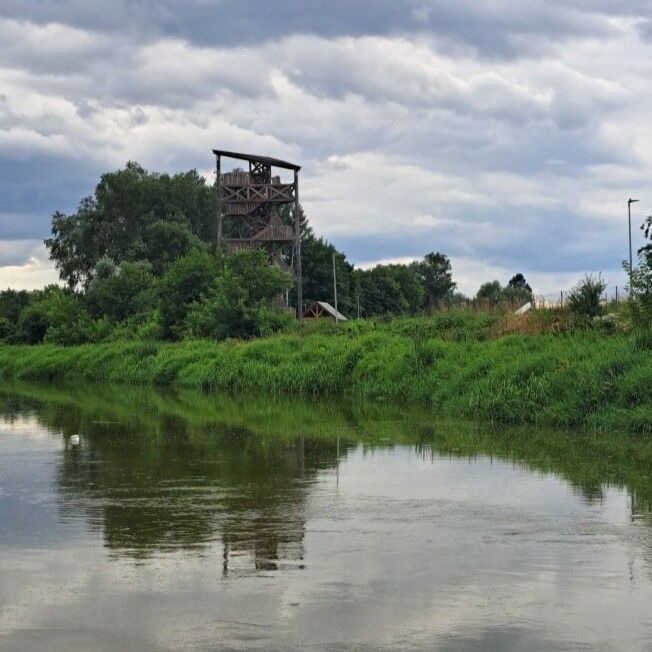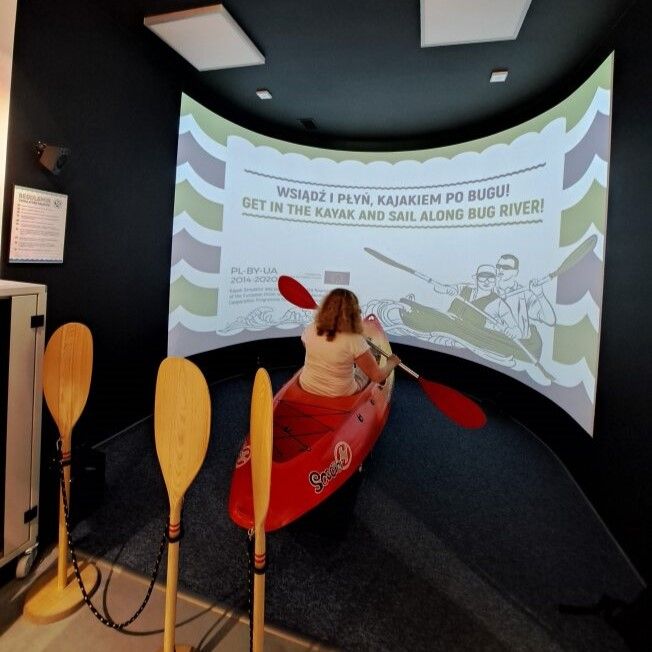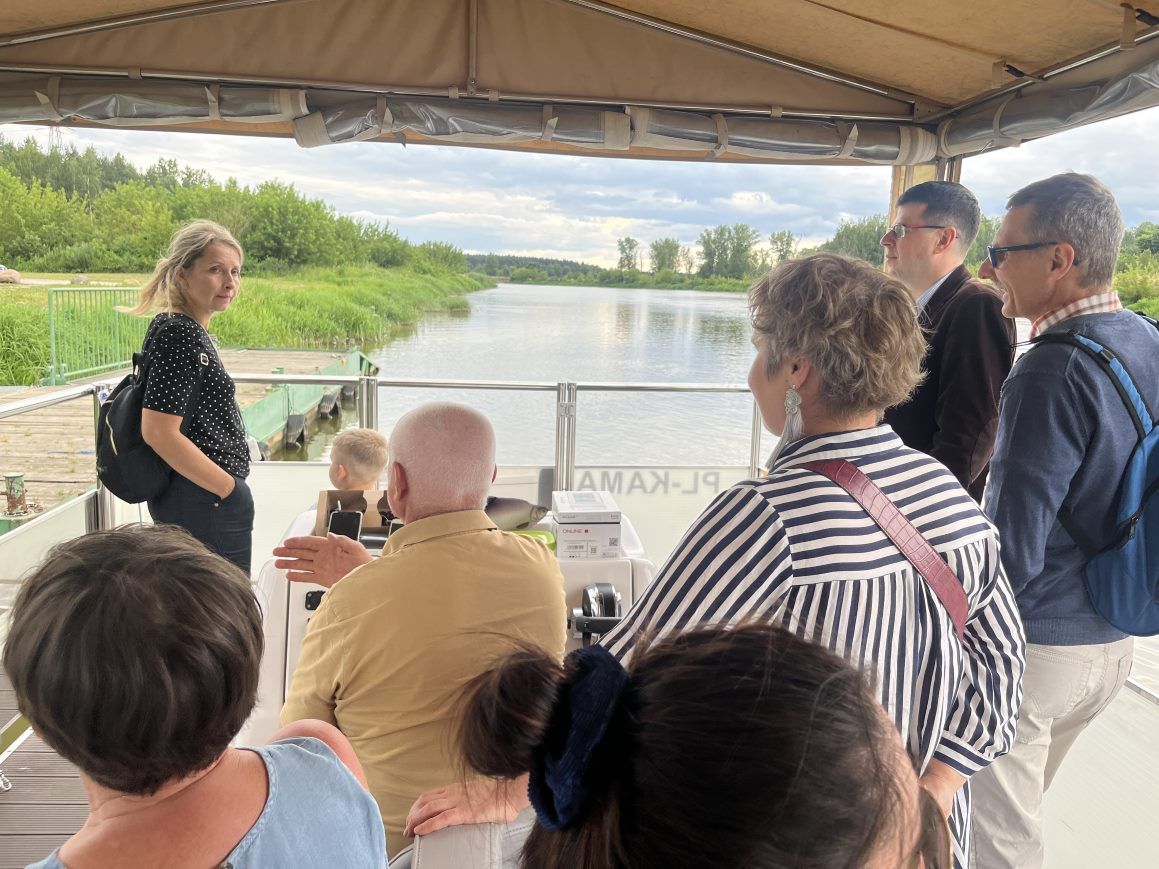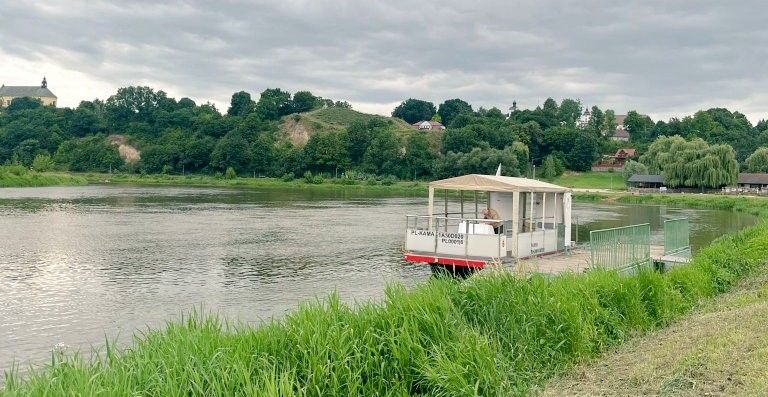Sport, food, cultural heritage: a tourist trail across the Bug river
Any river has duality built into it. Rivers can separate two shores, but also connect two coasts. Rivers can split two municipalities, regions or even countries; but they also bond communities curious enough to discover each other. This duality is very much true for the river Bug, as for more than 360 kilometres – out of its 778 km total length – it is the border between EU (Poland) and its neighbours (Ukraine and Belarus).
As any major river basin in Europe, the Bug has been an important melting pot of trade, culture, and history. We can get a crisp taste of the history of the borderlands here in the small, rural town of Drohiczyn, a city of approximately 2.000 inhabitants situated in the one of Poland’s most culturally diverse regions, Podlaskie Voivodeship. Drohiczyn has an extremely interesting past: just to mention one of many examples, the King of Ruthenia was crowned here in 1253! At the same time, the town also expresses the remarkable pattern of a challenging present, being confronted with the economic, social and demographic realities of the 21st century. Still, it has managed to create a vibrant community around its cultural and historical heritage. To quote one of the independent Polish tourism blogs www.kasai.eu, Drohiczyn is one of the most hidden tourism pearls of the Podlaskie region.
 When it comes to enhance the touristic potential of the area, the town has managed to create a big puzzle, where different projects and initiatives come together as pieces of a unique composition. Whether it is a bicycle trail along the riverbanks or a kayak route; a view-tower overlooking the riverbed or a pier for harbouring sight-seeing boats, visitors can enjoy the area with increasing perspectives and interest. “We see a lot of returning faces over the years!” confesses a tour guide.
When it comes to enhance the touristic potential of the area, the town has managed to create a big puzzle, where different projects and initiatives come together as pieces of a unique composition. Whether it is a bicycle trail along the riverbanks or a kayak route; a view-tower overlooking the riverbed or a pier for harbouring sight-seeing boats, visitors can enjoy the area with increasing perspectives and interest. “We see a lot of returning faces over the years!” confesses a tour guide.
And the Mayor of the town, Wojciech Borzym, echoes this perspective: “An isolated project, even if it is a very good one, would never have the impact of a variety of initiatives pointing in the same direction. We approach our cooperation initiatives, including cross-border ones, as an important part of a bigger frame.”
ENI CBC cooperation has played a significant part in the puzzle for what concern the Drohiczyn river valley area. Three projects were financed by the 2014-2020 Poland-Belarus-Ukraine programme, and they are all concurring in enriching the tourism offer of the region.

The “Bug Unites Us” project has paid a particular attention to develop kayak tourism: project partners have designed new kayak trails and infrastructure, they have established centres of kayak tourism and promoted common strategy of cross-border tourism.
But the river offers more than kayaking! The Local Action Group (LAG) “Bug Valley Melting Pot” and its chairperson, Agnieszka Wojtkowska, are not strangers to the cross-border cooperation, they have been implementing initiatives with neighbouring regions for years. Micro-projects like “Young Local Guardians of Bug Valley Nature” and “Culinary traditions of Bug river region” are exactly ‘small pieces of a larger puzzle’. While the first project was focused on stimulating tourism by organizing youth camps, school workshops, and contests for young people, the second one has put in place activities to protect and preserve the culinary heritage of the river valley. A great opportunity to present and promote dishes such as “zaguby”, “parowce” “wolok” or “krewianka”!
Agnieszka is frank in her assessment: “In my experience, the project financial size is not necessarily the biggest success factor in a project. Engaging the right people is! Small, local approaches and initiatives at community level, have proven to work well”. And despite the small financial size of the micro-projects (around 50.000 EUR each), there is a big heart at work. Both initiatives were also busy in supporting the people of Ukraine fleeing their country after the Russian aggression: in August 2022 they have organised a youth camp for 15 kids, whereas a culinary workshops for 165 people was set up in November/December 2022.
 At the end of the day, Mr. Wojciech is proud of the town’s achievements: “This is how we as community can make a difference, because the time when you can attract visitors with a single museum, one bicycle trail or a kayak route is over. Similarly, these three ENI CBC projects have allowed us to test our ideas in different contexts, they have encouraged us to complement instead of competing. And, most importantly, together with other national, regional or EU supported initiatives, we were able to create a “critical mass” of visitors willing to come back time and time again”.
At the end of the day, Mr. Wojciech is proud of the town’s achievements: “This is how we as community can make a difference, because the time when you can attract visitors with a single museum, one bicycle trail or a kayak route is over. Similarly, these three ENI CBC projects have allowed us to test our ideas in different contexts, they have encouraged us to complement instead of competing. And, most importantly, together with other national, regional or EU supported initiatives, we were able to create a “critical mass” of visitors willing to come back time and time again”.
